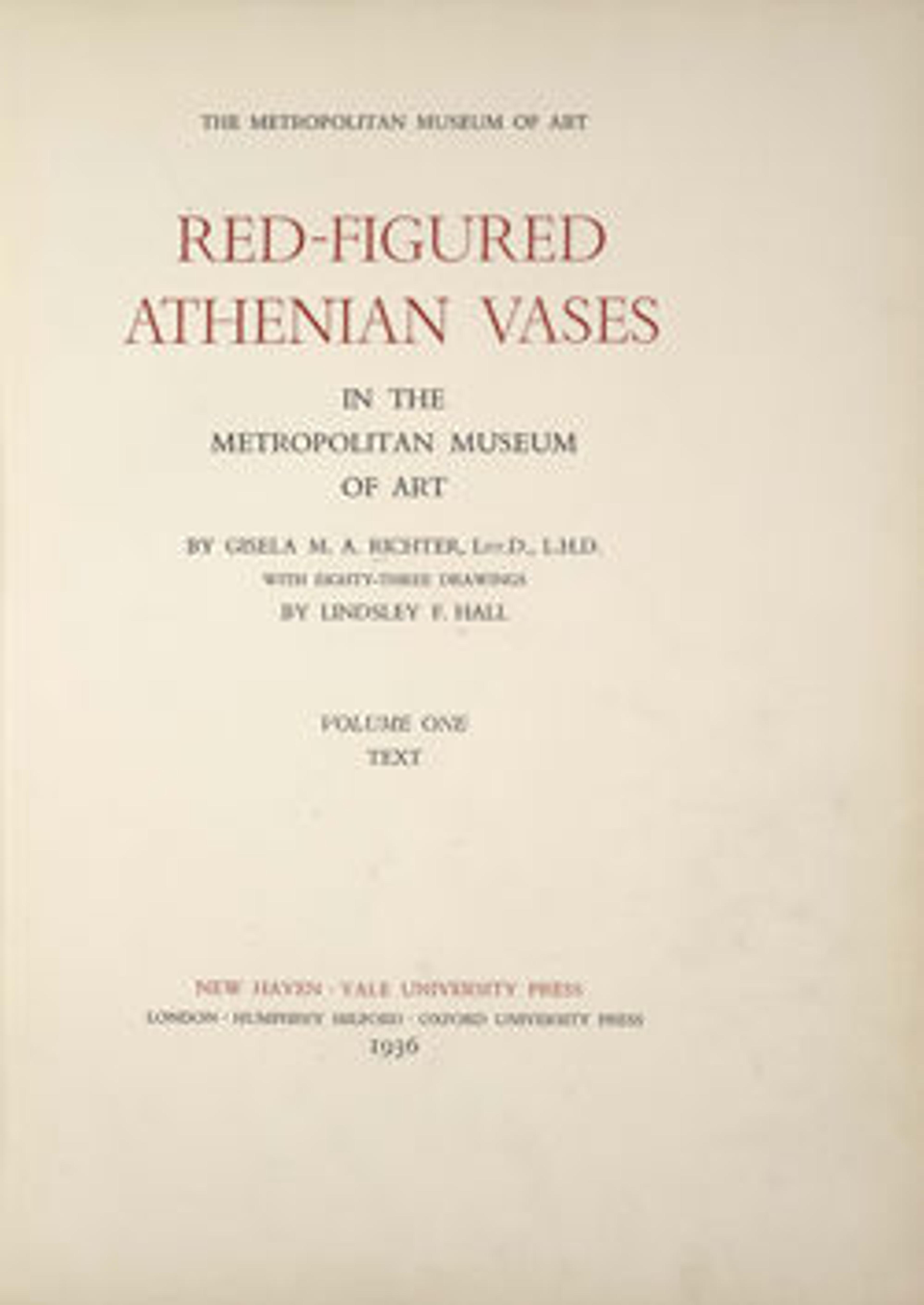Terracotta hydria: kalpis (water jar)
Flute player between two dancing youths in armor
The Greeks always diluted their wine with water. It was the privilege of the symposiarch, who acted as master of ceremonies at a drinking party, to decide the proportion of wine to water in each krater (bowl for mixing wine and water) as the evening progressed. On this water jar, two armed youths perform a dance to flute music. Such dances imitating the motions of warfare were popular at festivals throughout Greece. The term kalpis refers to a hydria of this particular shape.
The Greeks always diluted their wine with water. It was the privilege of the symposiarch, who acted as master of ceremonies at a drinking party, to decide the proportion of wine to water in each krater (bowl for mixing wine and water) as the evening progressed. On this water jar, two armed youths perform a dance to flute music. Such dances imitating the motions of warfare were popular at festivals throughout Greece. The term kalpis refers to a hydria of this particular shape.
Artwork Details
- Title: Terracotta hydria: kalpis (water jar)
- Artist: Recalls the Dikaios Painter
- Period: Archaic
- Date: ca. 500 BCE
- Culture: Greek, Attic
- Medium: Terracotta; red-figure
- Dimensions: 14 15/16 in. (38 cm)
Other: 15 5/8 in. (39.7 cm)
Lip diameter: 5 3/4 in. (14.7 cm)
Body diameter: 12 3/16 in. (31 cm)
Diam. of foot: 5 9/16 in. (14.2 cm) - Classification: Vases
- Credit Line: Rogers Fund, 1921
- Object Number: 21.88.2
- Curatorial Department: Greek and Roman Art
More Artwork
Research Resources
The Met provides unparalleled resources for research and welcomes an international community of students and scholars. The Met's Open Access API is where creators and researchers can connect to the The Met collection. Open Access data and public domain images are available for unrestricted commercial and noncommercial use without permission or fee.
To request images under copyright and other restrictions, please use this Image Request form.
Feedback
We continue to research and examine historical and cultural context for objects in The Met collection. If you have comments or questions about this object record, please contact us using the form below. The Museum looks forward to receiving your comments.
